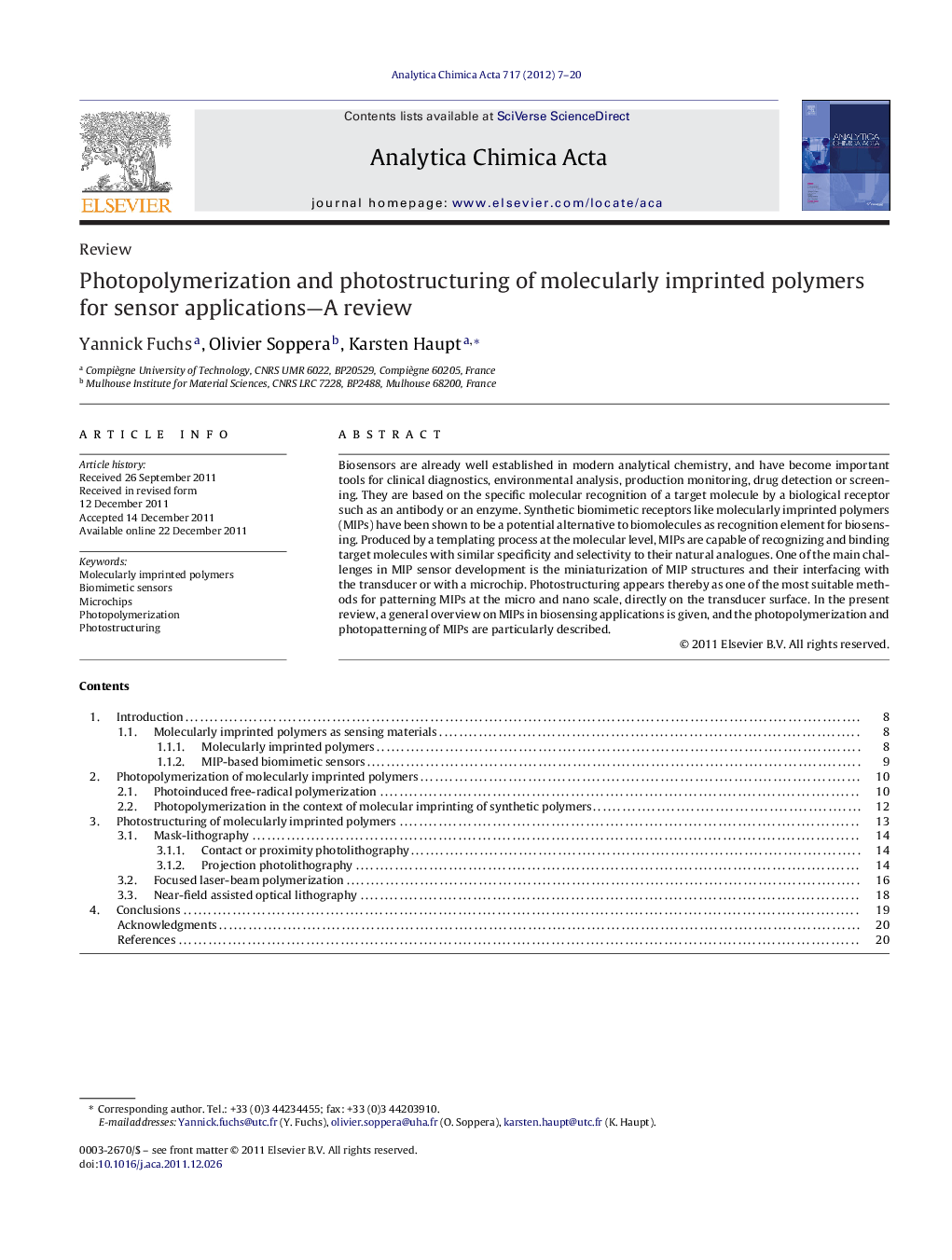| Article ID | Journal | Published Year | Pages | File Type |
|---|---|---|---|---|
| 1166352 | Analytica Chimica Acta | 2012 | 14 Pages |
Biosensors are already well established in modern analytical chemistry, and have become important tools for clinical diagnostics, environmental analysis, production monitoring, drug detection or screening. They are based on the specific molecular recognition of a target molecule by a biological receptor such as an antibody or an enzyme. Synthetic biomimetic receptors like molecularly imprinted polymers (MIPs) have been shown to be a potential alternative to biomolecules as recognition element for biosensing. Produced by a templating process at the molecular level, MIPs are capable of recognizing and binding target molecules with similar specificity and selectivity to their natural analogues. One of the main challenges in MIP sensor development is the miniaturization of MIP structures and their interfacing with the transducer or with a microchip. Photostructuring appears thereby as one of the most suitable methods for patterning MIPs at the micro and nano scale, directly on the transducer surface. In the present review, a general overview on MIPs in biosensing applications is given, and the photopolymerization and photopatterning of MIPs are particularly described.
Graphical abstractFigure optionsDownload full-size imageDownload as PowerPoint slideHighlights► Molecularly imprinted polymers (MIPs) are synthetic receptors for sensors and biochips. ► The photopolymerization of MIPs allows for the spatially resolved synthesis of micro and nanostructures. ► Using photopolymerization MIPs can be easily patterned at transducer surfaces.
